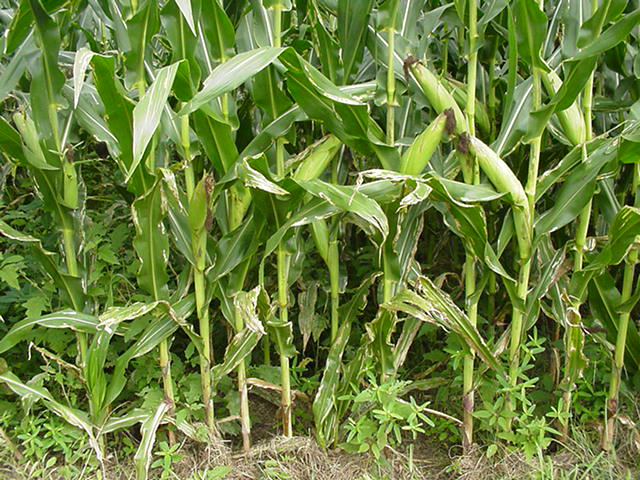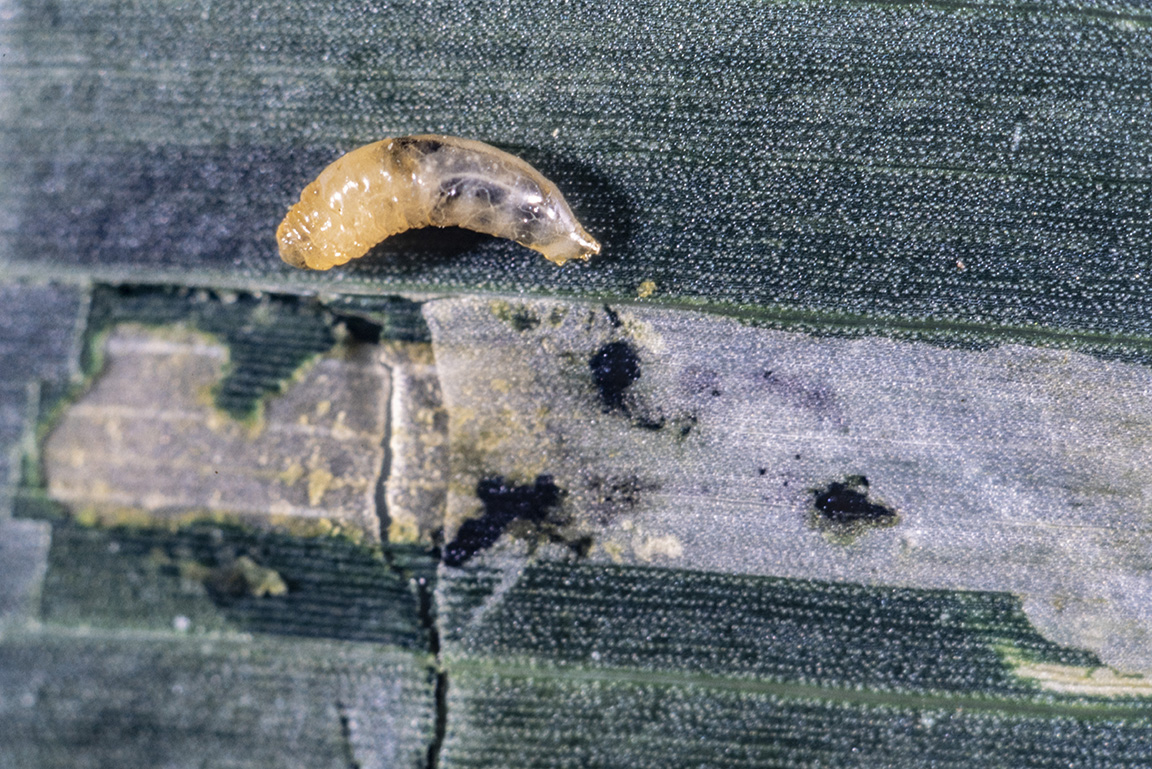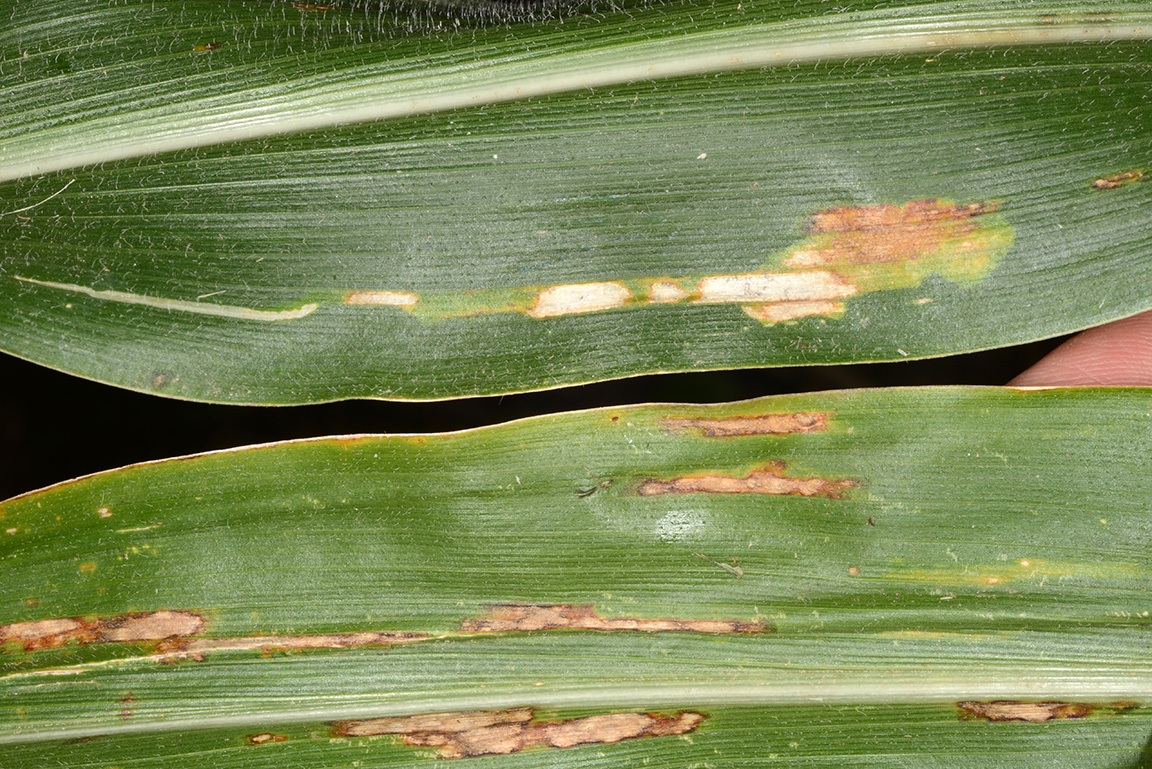Corn blotch leafminer, Agromyza parvicornis, is a leaf-feeding insect normally considered an “occasional or non-economic” pest. The adult is a gray to brown fly 1/4 inch in length. To most of us, it looks very similar to a housefly. In the early spring, adults insert eggs in either the upper or lower leaf surface of corn. The larva, or maggot, is yellowish and about 1/4 inch long when full grown. The larva pupates in a damaged leaf, or in the soil. Although there are several generations in a season, damage to only certain corn leaves indicates that infestations occur once per season. Larvae eat out the leaf interior leaving a transparent area or “mine.” Often many mines appear and sometimes merge on a single leaf. This can be quite an eye catcher, as leaves may appear completely bleached resembling herbicide damage.
There are no sampling methods or economic thresholds for corn blotch leafminer. The damage from this pest is believed to be of little economic importance as only a few leaves per plant (typically older, lower leaves that aren’t contributing much anyway) are usually damaged. It has been suggested by colleagues at the University of Nebraska that the hail adjuster’s charts can be used to estimate potential losses from the leafminer damage. This data is available on pages 34-35 of the Corn and Soybean Field Guide, 2004 Edition (ID 179). From this chart, in order to expect a 5% yield loss, it would require 70% leaf defoliation (mining) in 7-leaf corn. In 10, 12, or 15-leaf corn it would require 45, 40, and 30% mining respectfully for a 5% yield loss. Corn in the silking to blister stage could have significant yield losses at 15-20 percent leaf defoliation.
Even if a control were attempted, it would likely fail because the larvae are protected within the corn leaves. Treatments would have to target the adult flies, which would be difficult with one insecticide application. It is possible that foliar insecticides may worsen the damage. In short, there is no reliable way to control them. That’s the bad news. The good news is that we have never seen anything approaching these thresholds, in terms of damage. Parasitoids take a heavy toll on this species, and this helps keep their numbers in check as well.
An early investigator of this insect, W. J. Phillips wrote in 1914: “With such a host of… constantly on the watch, we need not concern ourselves seriously with remedies so long as conditions continue as they are now. In the event that a combination of circumstances should occur that would restrain the parasites and give free rein to their host, the blotch miner would undoubtedly prove a pest very difficult of control. This species seems to furnish an instance in which only the barrier of parasites stands between the farmer and what may easily become temporarily at least, a very serious pest.” Speculation as to why there is an “outbreak” of corn blotch leafminer points to either unique environmental conditions, which includes many variables, or practices that are inhibiting the natural parasites (e.g., multiple broadcast pesticide applications).





